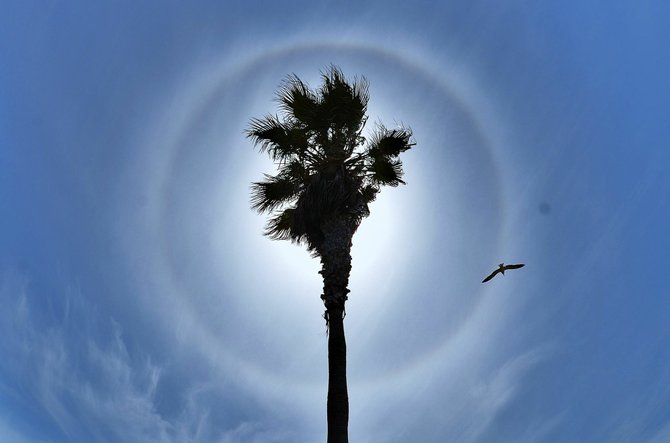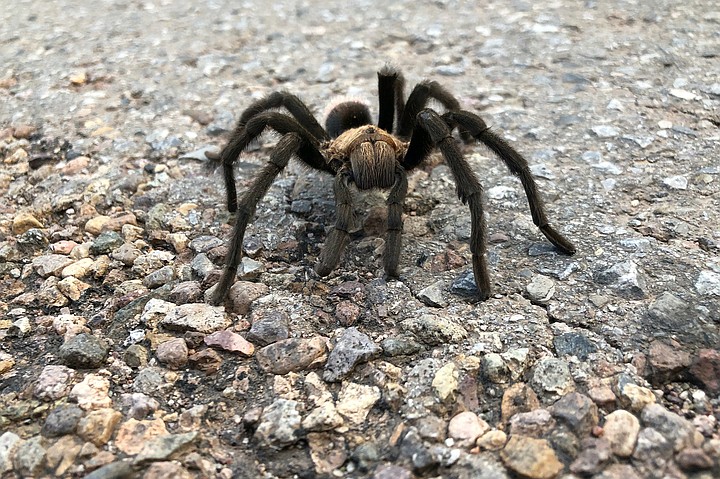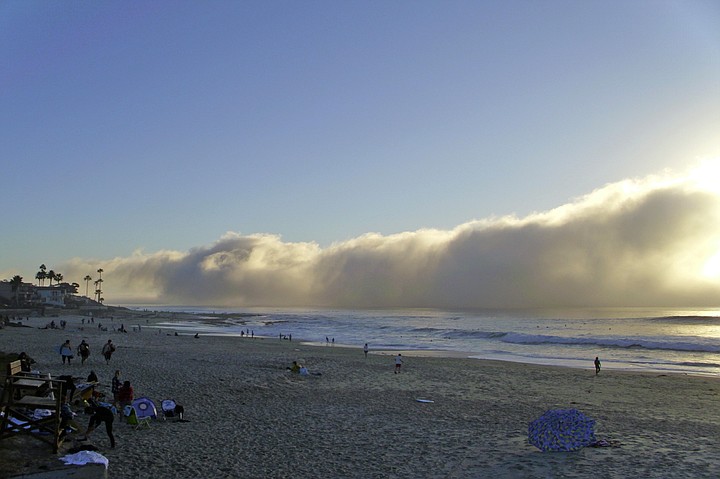 Facebook
Facebook
 X
X
 Instagram
Instagram
 TikTok
TikTok
 Youtube
Youtube

Atmospheric Ice-crystal Effects are often observed, starting about this time of year, because of the frequent appearance of high clouds made of tiny bits of ice. The most familiar of these optical effects is the 22°-radius halo, or ring, around the sun or the moon. Less often seen is a “corona,” a colored disk around the sun or moon — not the same as the solar corona seen during total eclipse; “sundogs,” colored arcs left and right of the sun; the sun pillar, a vertical column of light above the rising or setting sun; and a host of other rare and inconspicuous optical phenomena. All of these optical effects are a consequence of sunlight or moonlight refracting through or reflecting from the tiny facets of ice crystals in cirrus and other types of high clouds.

Roaming Tarantula Spiders are occasionally seen this time of year crossing rural roads or drifting through San Diego County’s backcountry-bordering neighborhoods. Doggedly searching for a mate, a male will try to hold its course despite your best effort to deflect or hinder him. Docile in temperament, most tarantulas will tolerate gentle handling; they may bite, however, if provoked. Despite their fearsome reputation, tarantula venom is less powerful than a bee’s.

Low-lying Temperature Inversions commonly occur in San Diego as winter approaches. During the night and morning hours, a meteorological condition often occurs in which the “normal” higher-you-go-the colder-it-gets trend is reversed. At such times, cold marine air lies below a stable layer of warmer air originating from inland locales. Whenever moist air is trapped below a low-lying inversion layer, dense fog forms on or near the ground, and San Diego International Airport is sometimes forced to suspend operations.


Atmospheric Ice-crystal Effects are often observed, starting about this time of year, because of the frequent appearance of high clouds made of tiny bits of ice. The most familiar of these optical effects is the 22°-radius halo, or ring, around the sun or the moon. Less often seen is a “corona,” a colored disk around the sun or moon — not the same as the solar corona seen during total eclipse; “sundogs,” colored arcs left and right of the sun; the sun pillar, a vertical column of light above the rising or setting sun; and a host of other rare and inconspicuous optical phenomena. All of these optical effects are a consequence of sunlight or moonlight refracting through or reflecting from the tiny facets of ice crystals in cirrus and other types of high clouds.

Roaming Tarantula Spiders are occasionally seen this time of year crossing rural roads or drifting through San Diego County’s backcountry-bordering neighborhoods. Doggedly searching for a mate, a male will try to hold its course despite your best effort to deflect or hinder him. Docile in temperament, most tarantulas will tolerate gentle handling; they may bite, however, if provoked. Despite their fearsome reputation, tarantula venom is less powerful than a bee’s.

Low-lying Temperature Inversions commonly occur in San Diego as winter approaches. During the night and morning hours, a meteorological condition often occurs in which the “normal” higher-you-go-the colder-it-gets trend is reversed. At such times, cold marine air lies below a stable layer of warmer air originating from inland locales. Whenever moist air is trapped below a low-lying inversion layer, dense fog forms on or near the ground, and San Diego International Airport is sometimes forced to suspend operations.
Comments